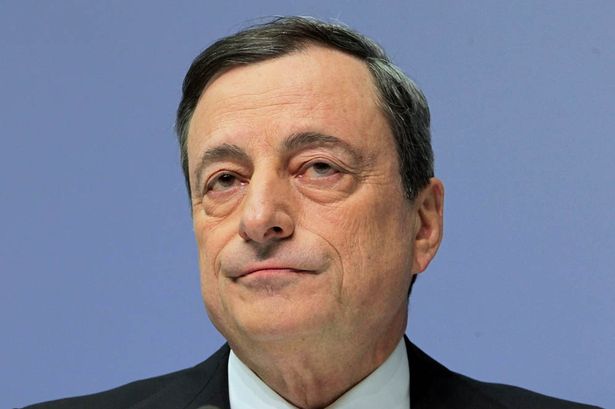While German bond yields remain very low, their sharp rise from near-zero in mid-April is effectively a tightening of monetary conditions just as the European Central Bank is trying to loosen them through its bond purchase program, which aims to revive the eurozone economy and pull it further away from the risk of deflation.
It’s one of the interesting developments in financial markets in the past few weeks — the sharp rise in government bond yields, particularly in the eurozone, Irish Examiner reported.
Having had their worst week in the history of the euro, in the first week of June, German 10-year bunds saw yields rising above 1% in recent days, after the ECB dismissed a six-week selloff that could blunt its trillion-euro economic stimulus program.
ECB President Mario Draghi said at the most recent monetary policy press conference, on June 3, that asset prices tend to be more volatile in a low interest rate environment and that “we should get used to periods of higher volatility”, effectively saying that there was no reason to adjust its policy stance in response to the rise in bond yields.
Such moves for bunds, an asset long considered one of the safest in the world, not least due to its traditionally low volatility, have wide implications. Government borrowing costs set the standard for the interest rates paid by consumers and businesses, so a rise is bad news.
The euro—whose weakness earlier this year made a significant contribution to the recovery in economic growth and inflation in the bloc—is now firming broadly and bets that it would slip to parity with the dollar are being questioned.
If bond yields/euro were to rise further, they could hurt the fragile economic recovery and stifle the rebound in inflation.
Reviving Inflation
Desperate to revive inflation, Draghi has done everything he can to encourage traders to sell the euro.
The single currency’s depreciation makes imported goods more expensive, as well as helping exporters. However, foreign-exchange traders are becoming less biddable. The euro has risen sharply in less than two weeks, to $1.12, while a trade-weighted measure of its value has rebounded 4% or so since mid-April.
This is probably the last thing Draghi wants. A 10% rise in the euro’s trade-weighted measure shaves something like 0.4-0.5 percentage points off regional inflation.
The eurozone can ill afford this when consumer prices are only rising 0.3% annually according to the most recent official data. The problem is that the foreign exchanges have fallen under the thrall of the bond markets.
The biggest rises in the euro’s exchange rate are tending to occur when German bond yields are surging, regardless of whether there is a good reason for the moves.
In the first week of June, the biggest two-day increase in German bond yields since 1998 was the spur for the biggest two-day jump in euro/dollar in more than six years. And when yields reversed course, so did the euro.


